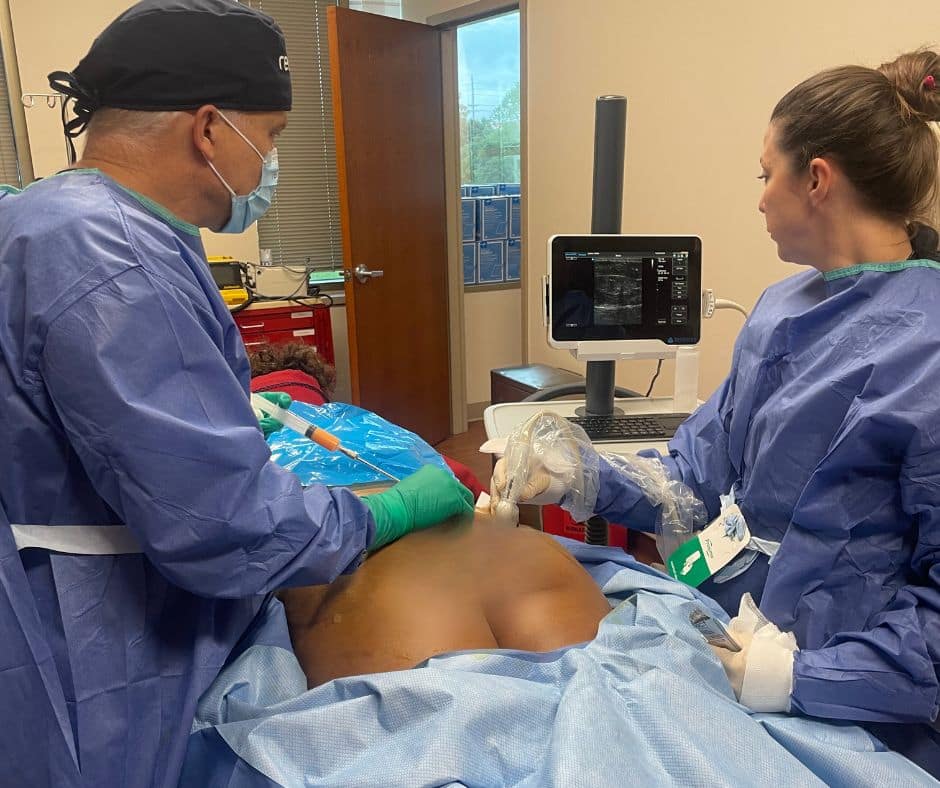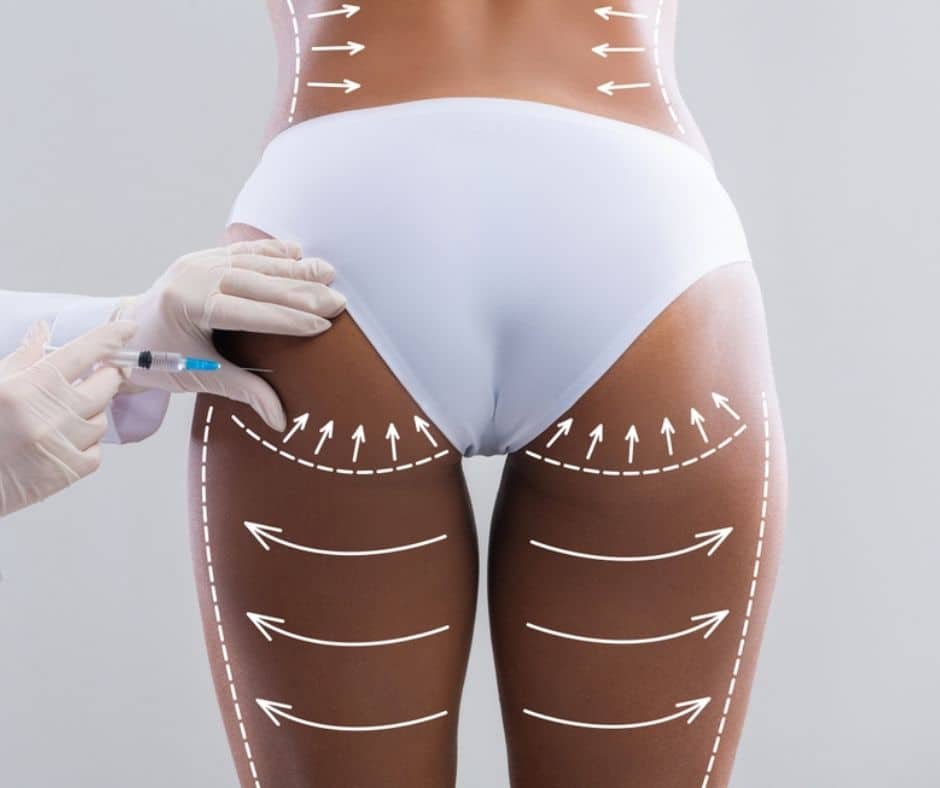Brazilian Butt Lift (BBL) surgery has gained immense popularity for its ability to create a more shapely and voluptuous figure. However, concerns about the procedure’s safety have also arisen, specifically regarding the risk of fat emboli. To address these concerns, ultrasound-guided fat transfer has emerged as a valuable technique in ensuring the safety and accuracy of BBL surgery. Dr. Wright and his team utilize this technique to ensure the safest environments for BBL patients. They dedicate extra time to this safety and keep surgery patients capped at 1-2 per day so that each one gets the attention to their safety they deserve.
The Importance of Visualizing Fat Placement in BBL
One of the main concerns with BBL surgery is the risk of fat emboli, which occurs when fat enters the bloodstream and can travel to vital organs. To minimize this risk, it is crucial to ensure that fat is injected above the muscle during the procedure. Ultrasound-guided fat transfer lets surgeons visualize fat placement in real time, ensuring it is accurately deposited above the muscle. This visualization significantly decreases the risk of fat emboli and enhances the procedure’s overall safety.
Understanding Ultrasound and its Role in BBL Safety
Ultrasound, or sonography, is a non-invasive imaging technique that uses sound waves to create images of the body’s internal structures. It has been used in medicine for over sixty years and is considered one of the safest imaging techniques, as it does not involve the use of radiation. In BBL surgery, ultrasound is used to visualize the various fat and muscle compartments, allowing for precise placement of the fat grafts above the muscle.
Advancements in BBL Safety with Ultrasound
Over the years, advancements in BBL techniques have significantly improved the procedure’s safety. Using large bore cannulas, auto-injectors, patient positioning, and ultrasound-guided fat transfer has played a key role in enhancing patient outcomes.
Large-bore cannulas give surgeons greater control over the placement of the cannula, reducing the risk of inadvertently entering the muscle. Autoinjectors have also gained popularity as they allow surgeons to focus on the placement of the cannula tip while the injector delivers the fat into the buttock. These advancements and proper patient positioning and ultrasound guidance have made BBL surgery safer.
The Benefits of Ultrasound in BBL Surgery
Ultrasound-guided fat transfer offers several benefits in the context of BBL surgery. Firstly, it allows surgeons to visualize the muscle and fat compartments, enabling them to watch the fat injected and ensure its correct placement above the muscle. This level of control and precision leads to better aesthetic outcomes and a reduced risk of complications.
Additionally, ultrasound-guided fat transfer enables surgeons to target specific fat compartments, both superficial and deep, resulting in a more customized and natural-looking buttock augmentation. By directly visualizing the cannula’s placement, surgeons can safely fill the deep fat layers, previously avoided due to the lack of visualization. This comprehensive approach allows for increased projection and better overall results.
The Role of Ultrasound in BBL Procedure
The procedure’s safety has significantly improved with the evolution of BBL techniques and the integration of ultrasound-guided fat transfer. Surgeons now better understand gluteal anatomy and the techniques required for safe fat grafting. Using ultrasound visualization during BBL surgery, surgeons can ensure that the fat is injected above the muscle, minimizing the risk of fat emboli.
During a BBL procedure, the ultrasound probe is placed where the fat is injected. This allows surgeons to visualize the fat cannula and ensure precise placement. The ultrasound can also identify the superficial and deep fat compartments, allowing surgeons to fill these layers under visualization directly.
By incorporating ultrasound into the BBL procedure, surgeons can achieve better control over the shape of the buttocks while enhancing safety. The visualization provided by ultrasound ensures that the fat is injected above the muscle, reducing the risk of complications and improving patient outcomes.
The Future of BBL with Ultrasound-Guided Fat Transfer
Using ultrasound-guided fat transfer in BBL surgery represents a significant advancement in surgery. As technology continues to improve, the ultrasound devices used in these procedures have become smaller and more portable, allowing surgeons to have real-time visualization during surgery. This innovation has enhanced the overall aesthetics of the buttock, as surgeons can identify and treat multiple fat compartments under direct visualization.
The future of BBL surgery will likely involve further refinement of ultrasound-guided techniques, ensuring even greater precision and safety. The integration of advanced imaging technologies and the continued collaboration between surgeons and ultrasound experts will contribute to the ongoing evolution and optimization of the procedure.
Ultrasound-guided fat transfer has revolutionized the safety and precision of Brazilian Butt Lift surgery. By enabling surgeons to visualize the placement of fat grafts in real-time, ultrasound has significantly reduced the risk of fat emboli and improved patient outcomes. The use of large bore cannulas, auto-injectors, patient positioning, and ultrasound guidance has further enhanced the safety and efficacy of BBL surgery. As the field continues to advance, the integration of ultrasound technology will undoubtedly play a vital role in shaping the future of Brazilian Butt Lift surgery, ensuring even better results and patient satisfaction.



